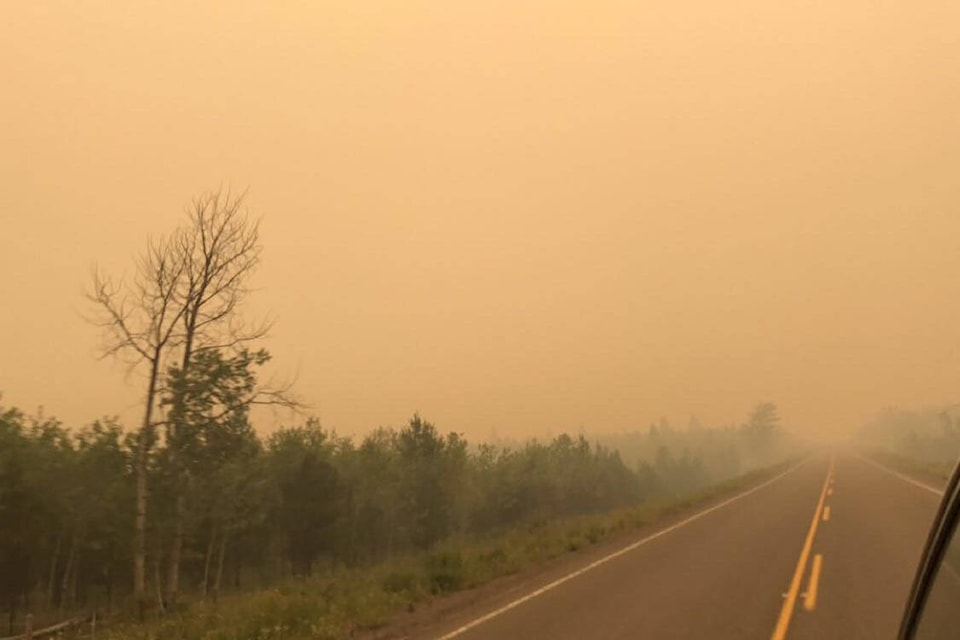UPDATE:
The air quality aler has ended as of Monday, July 17.
ORIGINAL:
Environment Canada issued an air quality statement for the eastern part of the Bulkley Valley, including Smithers.
Air quality is measured at the St. Joseph’s School station. Readings can be found here. Air quality objectives can be found here.
From Environment Canada:
Smoke is causing poor air quality and reducing visibility. Smoke is expected or occurring.
The Ministry of Environment, in collaboration with the Northern Health Authority, has issued a Smoky Skies bulletin for the Prince George and surrounding area including Vanderhoof and Fort Fraser; the eastern portion of the Bulkley Valley and the Lakes District including Fort St. James and Fraser Lake; and Valemount and the surrounding region due to wildfire smoke in the area.
Smoke concentrations will vary widely as winds, fire behaviour and temperatures change.
Consider avoiding strenuous outdoor activities. If you are experiencing any of the following symptoms, contact your health care provider: difficulty in breathing, chest pain or discomfort, and sudden onset of cough or irritation of airways. exposure is particularly a concern for infants, the elderly and those who have underlying medical conditions such as diabetes, and lung or heart disease.
This bulletin will remain in effect until further notice.
What is a Smoky Skies Bulletin?
1) A Smoky Skies Bulletin is a new type of public notice being issued by the Ministry of Environment, in collaboration with the Northern Health Authority, to improve communication on wildfire smoke.
2) It will be issued when smoke concentrations in an area have, or may, reach levels that are of concern for human health.
3) Such decisions are based on satellite information, smoke transport models, photographs of visual air quality, first-hand observations from the area, in addition to concentrations of fine particulate matter recorded at local air quality stations.
a) In most fire seasons, there are occasions when smoke from forest fires is carried into our region.
b) Under these conditions, smoke concentrations may vary dramatically over short periods and over small distances.
c) Those members of the public who are sensitive to the effects of smoke should monitor their symptoms and, if necessary, take steps to reduce their exposure to smoke.
d) During the fire season, a heavy bluish-white haze, possibly accompanied by the smell of smoke, are clear indications that smoke concentrations are higher than usual. The concentrations and air quality health index measured at an air station many kilometres away may not be a good indication of local smoke conditions.
Individuals may experience symptoms such as increased coughing, throat irritation, headaches or shortness of breath. Children, seniors, and those with cardiovascular or lung disease, such as asthma, are especially at risk.
Stay inside if you have breathing difficulties. Find an indoor place that’s cool and ventilated. Using an air conditioner that cools and filters air may help. If you open the windows you may let in more polluted air. If your home isn’t air-conditioned, consider going to a public place (library, shopping mall, recreation centre) that is air-conditioned.
For more information on current air quality, see: bcairquality.ca.
Visit airhealth.ca for information on how to reduce your health risk and your personal contribution to pollution levels, as well as for current and forecast AQHI values.
